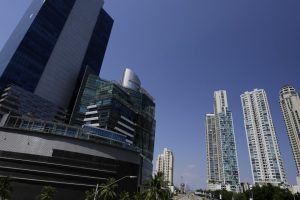How is the Colombian economy and where is it going? These have been two doubts that have been hanging over the country almost throughout 2024 and economists and experts have spent a lot of time working to try to clear up those unknowns.
(See: Where is the Colombian economy going? 10 keys to understanding its direction).
One of the last to refer to the subject was Jonathan Malagón, the president of the Association of Banking and Financial Entities of Colombia (Asobancaria) and who, in conversation with Yamid Amat, for the newspaper EL TIEMPO, he said that The national economy would be in a new phase of growth.
“Colombia has entered a new phase of growth after a year of macroeconomic normalization. Indeed, all demand components showed positive variations in the second quarter. This is especially notable for the category of gross fixed capital formation, which grew 4.3% after five consecutive periods showing contractions.“said Malagón.
The official also said that this shows that the country and its economy they have “gained dynamism again“However, he clarified that There are several challenges that must be faced and overcome to strengthen Colombian finances.
(See: Constitutional reform for autonomy: progress or fiscal risk for Colombia?).
“There are persistent challenges, especially in sectors such as industry and construction, which remain in contractionary territory. Furthermore, fiscal pressures and external risks, such as slowing global economies and geopolitical tensions, pose additional challenges. We hope, however, that the Credit Pact will be a central element in the consolidation of this path of reactivation“, analyzed Malagón.
He also appreciated that, In the first half of 2024, the Colombian economy showed its first signs of recovery in all components of domestic demand, accompanied by a inflation which has gradually decreased and predicted that, for the remainder of the year, “We expect that the reduction in the intervention rate will continue to drive the expansion of economic activity, leading to GDP growth close to 1.8%“.
Jonathan Malagón, president of Asobancaria.
The progress of the Credit Pact
Asked about how the Credit Pact is, Malagón stated that “The results of the first month of implementation show positive dynamics. The figure of disbursements to the sectors prioritized by the Pact amounted to $10.6 billion in September, which represents an annual increase of 26.5%“.
(See: GDP, inflation and unemployment: this is how Colombia would fare in 2024 and 2025, according to the IMF).
Likewise, he reiterated that this program, development between the national bank and the government of President Gustavo Petro, aims “the granting of credits to strategic sectors for economic reactivation. This approach will allow credit to be channeled effectively and accelerate the economic reactivation process.“.
Finally, Malagón was expectant that The Bank of the Republic continues with its path of interest rate cuts, “thereby giving greater impetus to the reactivation of domestic demand.” Recently, The Issuer left the rates at 9.75% (October meeting).
(If you want to read Jonathan Malagón’s complete interview with Yamid Amat for EL TIEMPO, click here).
(See: The main reason why Colombia is one of the countries with the most fiscal losses).
PORTFOLIO













Add Comment